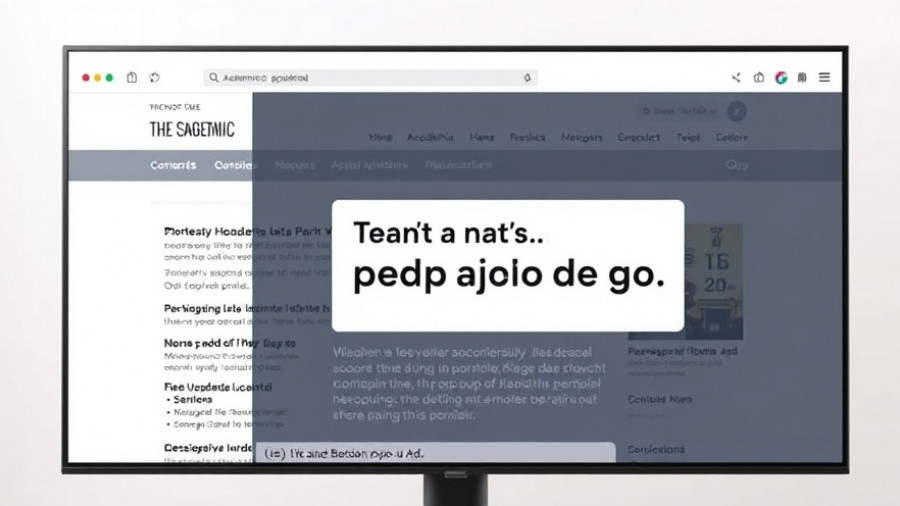
The Shift Towards AI Self-Sufficiency
In a groundbreaking move, Microsoft has announced plans to enhance its AI capabilities by investing heavily in its own computing power. As the technology giant transitions towards greater autonomy in artificial intelligence, this initiative signals a significant shift in its operational strategy. Historically, Microsoft has relied extensively on developing AI technologies that leverage the advancements of third-party firms, most notably OpenAI. However, as of September 2025, following the launch of its initial in-house AI models, the company aims to maximize its potential by developing and powering AI tools independently.
Understanding the Current AI Landscape
Today, Microsoft's AI tools substantially depend on external large language models, particularly those sourced from OpenAI. While the partnership has yielded powerful applications, it has also highlighted a reliance that Microsoft now seeks to mitigate. Mustafa Suleyman, Microsoft AI CEO, articulated this vision during an all-employee meeting, asserting that it is essential for a company of Microsoft's size to maintain AI self-sufficiency. By building its AI chip cluster, Microsoft aims to enhance its capabilities and enable faster development of pioneering models.
Comparative Insights on AI Capacity
The move to increase computing power is timely; the battle for dominance in AI technology is heating up. While Microsoft has recently showcased its MAI-1-preview model, trained with just 15,000 Nvidia H100 GPUs, competitors like OpenAI are projected to operate with over 1 million GPUs online by the end of 2025. This competitive edge is not only a numbers game but also a significant factor in training models capable of handling more complex tasks effectively.
The Vision for Future AI Models
According to Suleyman, Microsoft's future plans include creating a wide array of frontier models completely in-house. His emphasis on pragmatism highlights the understanding that while Microsoft aims for independence, incorporating existing models where beneficial remains a part of their strategy. This balanced approach of leveraging both in-house and external resources reflects a keen understanding of the industry's rapid evolution and iterative nature.
Implications for AI Development and Market Trends
The implications of Microsoft's strategy resonate deeply within the AI industry. The focus on enhanced computing power not only raises questions about the future of AI models but also the competitive landscape of technology firms involved in AI. As Microsoft continues to expand its capabilities, this could potentially lead to innovations that may redefine industries. The technology ecosystem today is characterized by intensive competition, where companies must constantly innovate to stay relevant. Therefore, Microsoft's strategic pivot could affect not only its trajectory but also the entire market as shifts in computing resources spur new innovations.
In Conclusion: A New Era for Microsoft AI
Microsoft's push to become self-sufficient in AI marks a critical juncture not just for the company but for the AI sector at large. As it embraces increased independence through significant investments in physical infrastructure, the potential for groundbreaking advancements in AI technologies is immense. With leaders like Satya Nadella and Mustafa Suleyman at the helm, Microsoft appears poised to navigate this complex landscape effectively. For tech enthusiasts and industry stakeholders alike, following these developments will be crucial as the future of AI unfolds.
 Add Row
Add Row  Add
Add 




Write A Comment